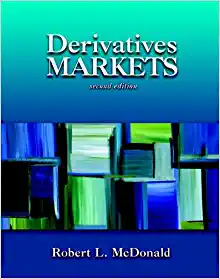Answered step by step
Verified Expert Solution
Question
1 Approved Answer
Download the SP500 prices (adj. close) at daily and monthly frequency for the period October 1999 to October 2015. You can obtain the data at
Download the SP500 prices (adj. close) at daily and monthly frequency for the period October 1999 to October 2015. You can obtain the data at finance.yahoo.com. The purpose of this exercise is to confirm or disprove the following perceptions about the stock market:
- The Halloween effect is about the popular saying ``sell in May and go away, where it is believed that acquiring stocks (going long) on the last trading day in October), and selling those positions at the end of April produces superior returns when compared to a buy-and-hold strategy. Assume that Ann invested $1000 in the SP500 at the end of October 1999. Ann was an ``active investor and followed the ``sell in May and go away advice. At the end of each April she sold the stock and placed her money in a checking account until the end of October. The checking account pays 1% interest (for those 6 months). Then in the last trading day of October (right before market closing time) she reinvested back all her money into the SP 500. Bob invested $1000 in the SP500 at the end of October 1999. Bob was an ``passive investor and let his money invested in the SP 500. How much money do Ann and Bob have at the end of October 2015? Based on these calculations, is there a Halloween effect in the SP 500 index?
- Turn of the month effect is the belief that most of the (positive) returns on stocks occur at the turn of the month, which begins with the last trading day of the month and ends on the third trading day of the next month (a span of four days). To check this claim, assume that Ann invests $1000 initially. She buys the SP500 in the penultimate trading day of a month, close of business (cob). She sells in the third trading day of the next month, cob. What is her final wealth in the third trading day of October 2015 (cob), if she started investing in the last trading day of October 1999 (cob) according to the turn of the month strategy? Compare this to the final wealth under a buy-and-hold strategy, where she would invests $1000 in the SP500 in the last trading day of October 1999, do nothing afterwards, and sell eventually her shares in the third trading day of October 2015.
Step by Step Solution
There are 3 Steps involved in it
Step: 1

Get Instant Access to Expert-Tailored Solutions
See step-by-step solutions with expert insights and AI powered tools for academic success
Step: 2

Step: 3

Ace Your Homework with AI
Get the answers you need in no time with our AI-driven, step-by-step assistance
Get Started


